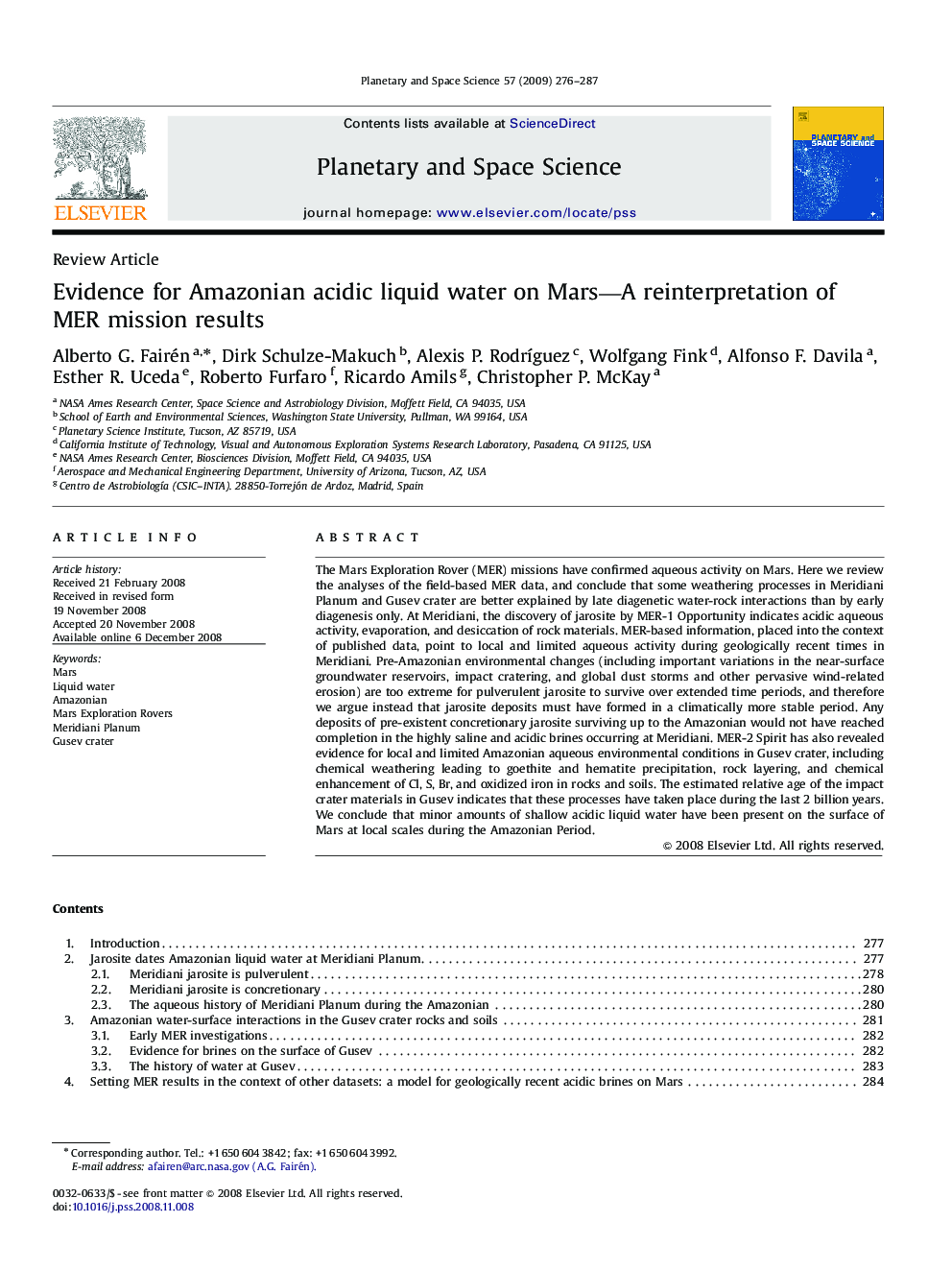| Article ID | Journal | Published Year | Pages | File Type |
|---|---|---|---|---|
| 1782371 | Planetary and Space Science | 2009 | 12 Pages |
The Mars Exploration Rover (MER) missions have confirmed aqueous activity on Mars. Here we review the analyses of the field-based MER data, and conclude that some weathering processes in Meridiani Planum and Gusev crater are better explained by late diagenetic water-rock interactions than by early diagenesis only. At Meridiani, the discovery of jarosite by MER-1 Opportunity indicates acidic aqueous activity, evaporation, and desiccation of rock materials. MER-based information, placed into the context of published data, point to local and limited aqueous activity during geologically recent times in Meridiani. Pre-Amazonian environmental changes (including important variations in the near-surface groundwater reservoirs, impact cratering, and global dust storms and other pervasive wind-related erosion) are too extreme for pulverulent jarosite to survive over extended time periods, and therefore we argue instead that jarosite deposits must have formed in a climatically more stable period. Any deposits of pre-existent concretionary jarosite surviving up to the Amazonian would not have reached completion in the highly saline and acidic brines occurring at Meridiani. MER-2 Spirit has also revealed evidence for local and limited Amazonian aqueous environmental conditions in Gusev crater, including chemical weathering leading to goethite and hematite precipitation, rock layering, and chemical enhancement of Cl, S, Br, and oxidized iron in rocks and soils. The estimated relative age of the impact crater materials in Gusev indicates that these processes have taken place during the last 2 billion years. We conclude that minor amounts of shallow acidic liquid water have been present on the surface of Mars at local scales during the Amazonian Period.
